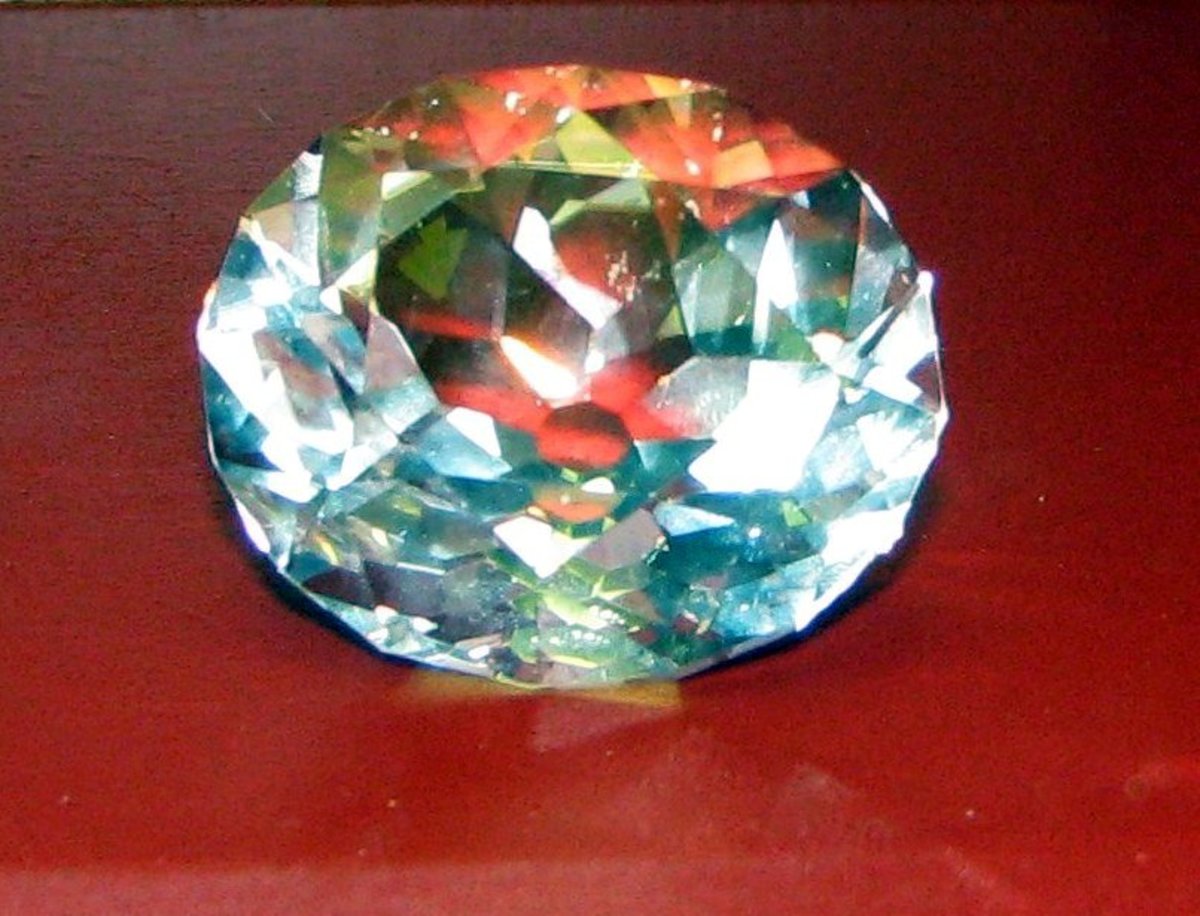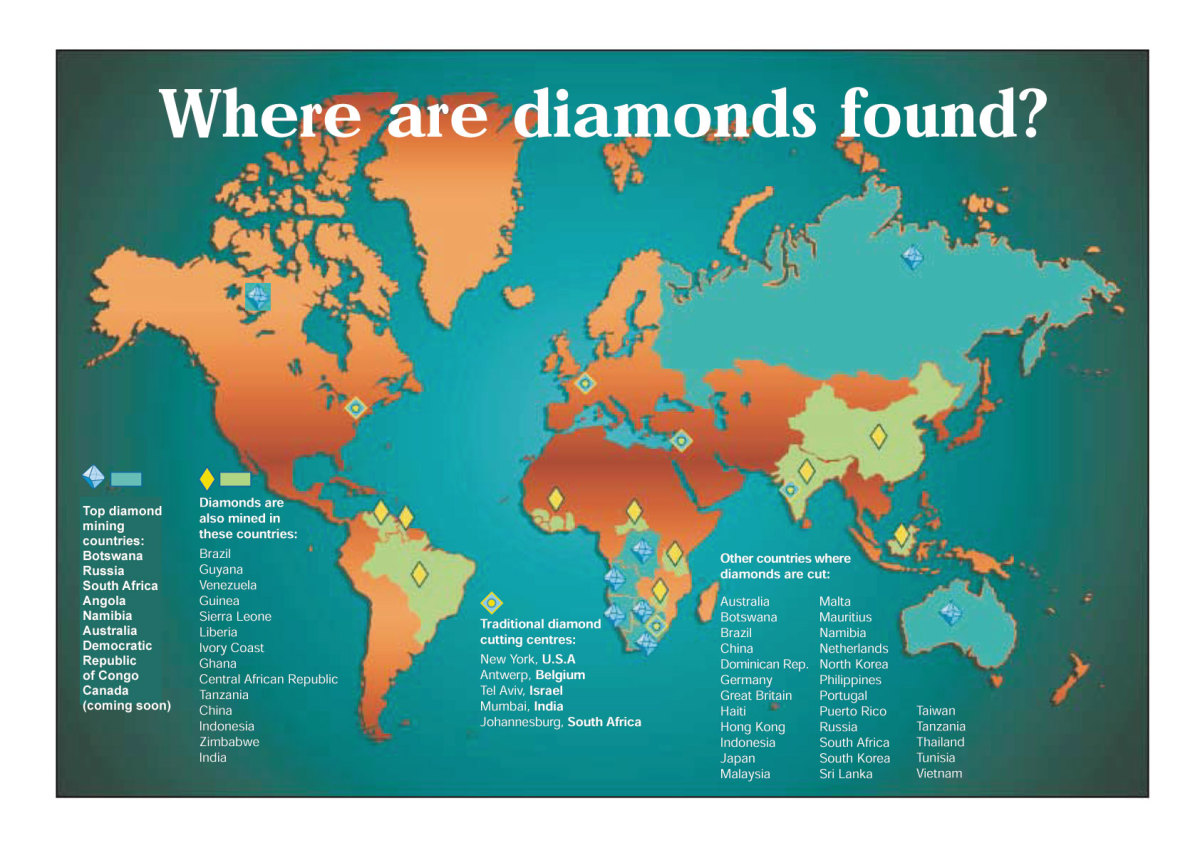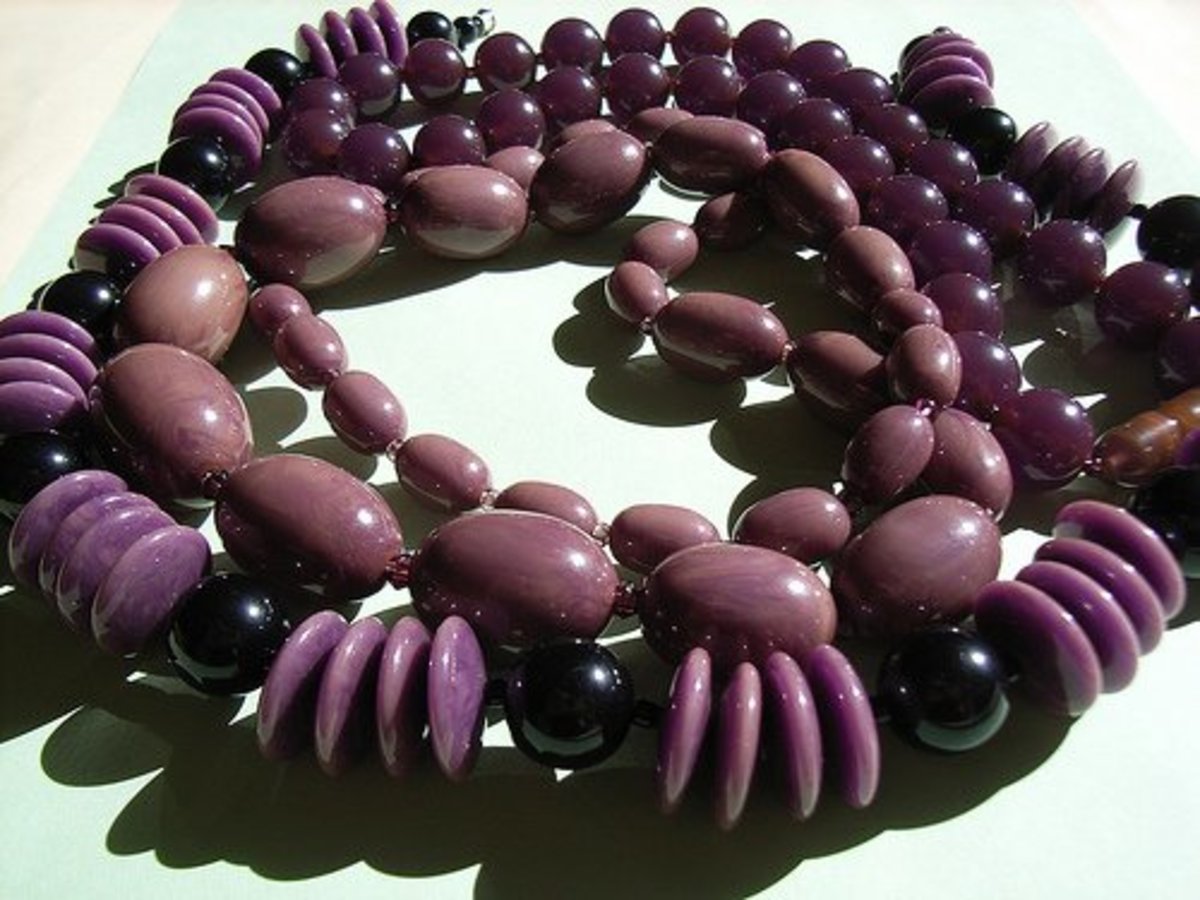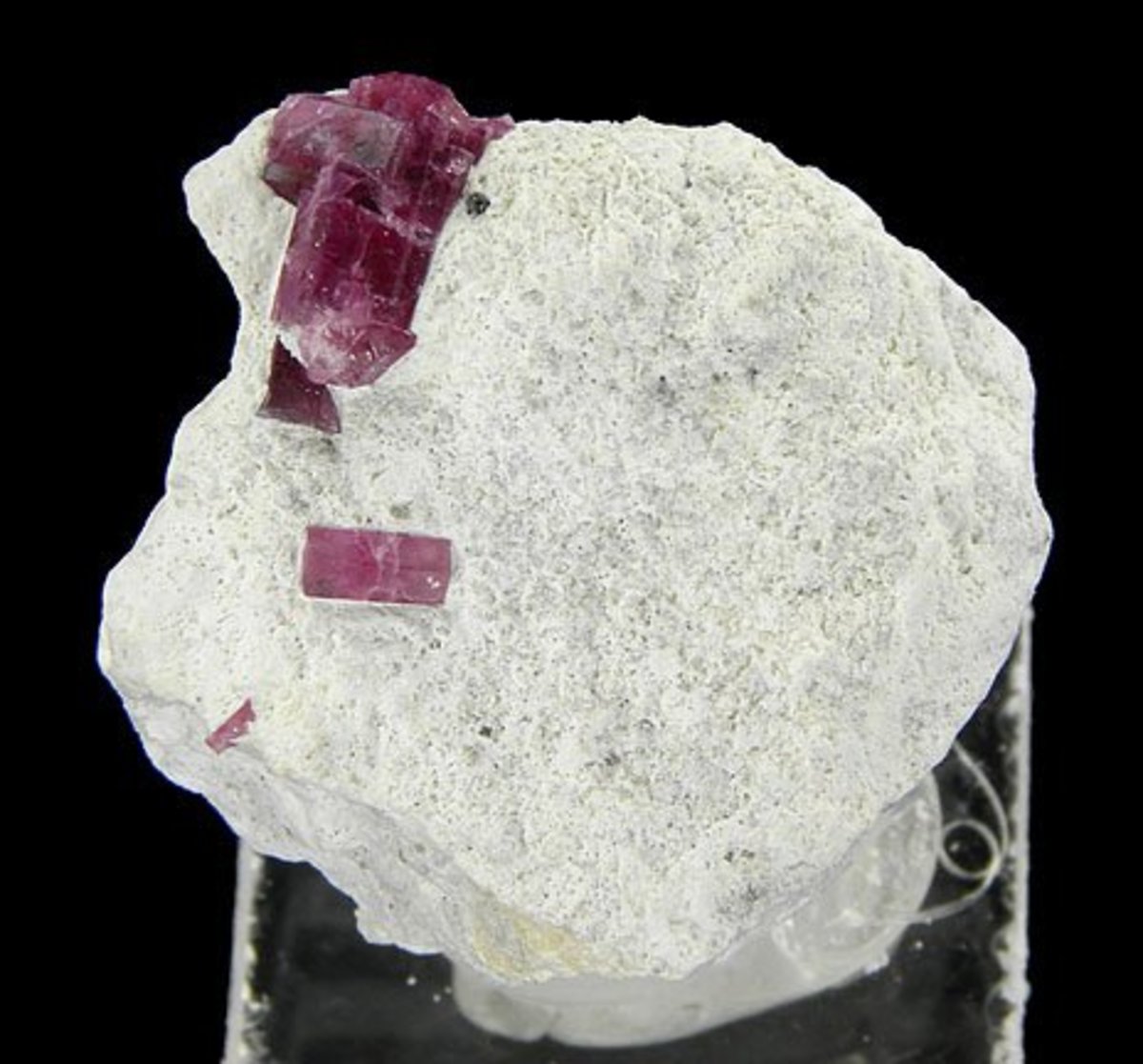Diamond Properties And 4C's
Diamonds are made of a chemical element called carbon. The atoms in diamond have a special arrrangement forming a macromolecule giving diamond its unique properties,like hardness. Although graphite is also a pure form of carbon yet it is not like diamond as it has a different molecular arrangement.
Diamonds can sparkle brilliantly, but very few are naturally sparkling and most of them need some treatment before they look stunning. Completely flawless diamonds are very rare. They are precious and valuable, and people wear them as jewellery. But most diamonds are small and contain flaws. The worth of these is much less.
The word diamond itself has some very special meaning in every one's life specially a women. It is said that a diamond is the the best friend of a women and no doubt women have been always fascinated by diamonds and their sparkle. It is the ultimate gift you can give to a women a part form love of course.
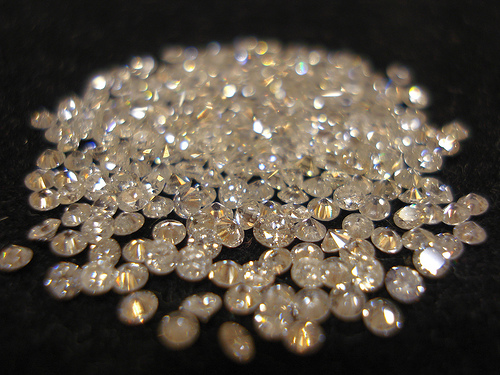
How are diamonds formed?
Diamond notably larger ones are formed deep under the Earth's crust. Here the heat and pressure melts rocks that are composed of carbon. The immense heat and pressure also allows carbon atoms to take a unique molecular arrangement to form diamonds.
All this process happens very deep under Earth's crust and it is impossible for us to get all the diamonds directly from below. Actually like many minerals nature automatically forms diamond mines which are formed when molten lava gushes out from below the Earth. However this whole process can take billions of years to take place and the diamond mines we have now might have formed many years back.
The smaller diamonds can form closer to the earth’s surface. Movements of the planet’s crust lift these stones up from the depths.

What can diamonds do?
Diamonds are the hardest substance on Earth. By hard it doesn't mean that they cannot be broken. Actually hardness means that how scratch resistant a substance is. You can scratch or cut just about anything with a diamond — even another diamond. On a scale of hardness from one to 10 with 10 as the hardest, diamonds are a 10.
Because they are so hard, diamonds are great for drills, saws, and other cutting tools. That makes them very useful in mining and manufacturing.
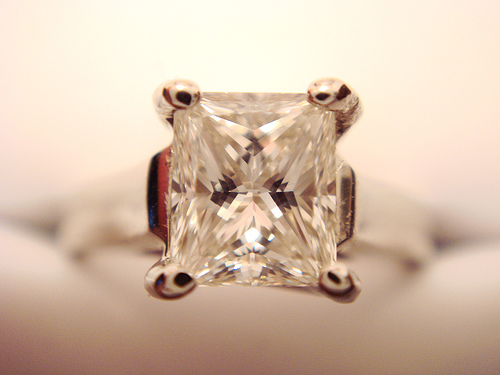
Synthetic and imitation diamonds
Are there any shortcuts to making diamonds? Actually, there are. People have learned how to make artificial diamonds and other gems. Diamonds made by people are called synthetic diamonds.
Synthetic diamonds look and act like the real thing. They are as hard as the natural ones. In fact, most diamonds used for industrial purposes are synthetic.
Imitation diamonds aren’t diamonds at all. They’re usually made from inexpensive materials that sparkle brightly, such as quartz or glass. But they aren’t as hard as natural or synthetic diamonds. Imitation diamonds are used mostly in jewellery.
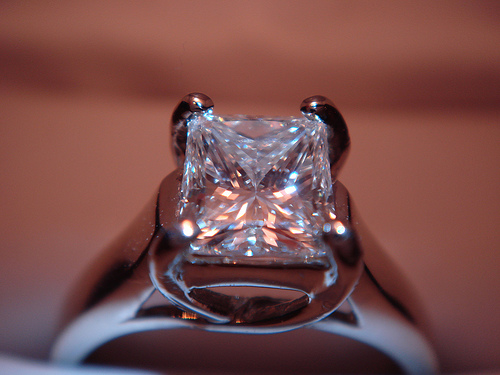
Why are diamonds cut?
Diamonds found in the ground are rough. They don’t shine like the gems in jewellery stores. They look greasy or dirty. So how do you make diamonds really sparkle? You cut them. Cutting a diamond gives the stone edges that bring out the shine. Diamond cutters trim away flaws such as cracks or cloudy spots.
It takes careful planning to cut a diamond. The goal is to make the diamond as large and as valuable as possible. Even so, a cutter slices away about half of a diamond’s original size. After polishing, the cut diamond is ready to sell.
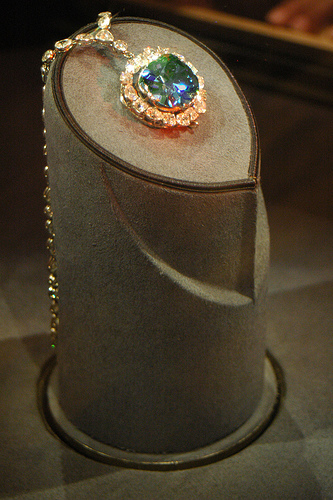
What makes the diamonds worth so much?
Diamonds are judged by the “4 Cs” i.e. colour, clarity, carat weight, and cut.
Colour: When diamonds form, small amounts of minerals get inside them. This changes their
colour. Colourless stones are very desirable. Yellowish or brownish ones are not.
Clarity: Can you see flaws in the diamond? A diamond with great clarity has no visible flaws. The clearer a stone is, the greater its value.
Carat weight: The heavier a diamond is the better. Because large, heavy diamonds are less common, they are more valuable. A diamond that weighs two carats or more is usually considered large.
Cut: Diamond cutters decide on the shape and proportion of a stone. An attractive cut makes a diamond more desirable.
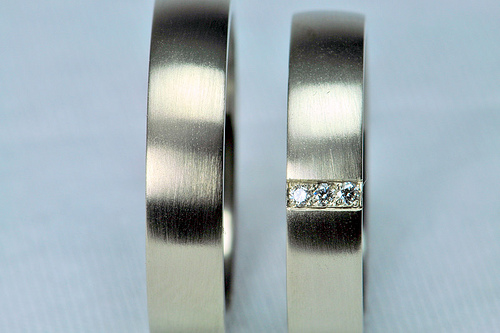
How big can diamonds get?
Diamond can be of a variety of sizes and it is very rare to find a single large piece of diamond. The famous Cullinan diamond is by far the largest diamond ever discovered. The diamond was discovered in 1905 in South Africa. The Cullinan diamond weighs a staggering 3,106 carats! Believe me it is way to heavy for a diamond.
Big diamonds are usually cut into smaller diamonds as they have many flaws as a whole. Cutting out smaller pieces makes a single large piece of something worth. The Cullinan was cut into 105 different gems. The largest of these is called the Star of Africa. It is the largest cut diamond in the world. Today, the Star of Africa sits at the end of the British royal sceptre.
- The World's Most Expensive Diamonds
I just love checking out expensive items, I mean really expensive items like diamonds, so expensive I'll never be able to afford them. Not that I begrudge those who can, more luck to them, it's a dirty job... - 14k White Gold
Gold is one of the prime metals produced by nature and ever since its discovery by mankind, its shine,color and unique properties have always made every one fall in love with it. Truly speaking whenever we...

